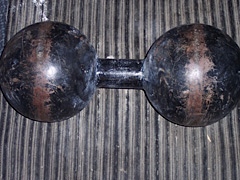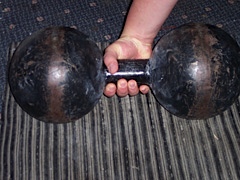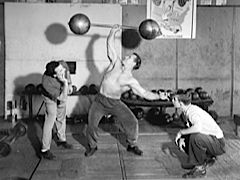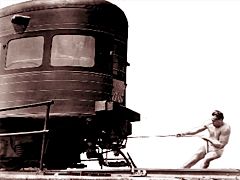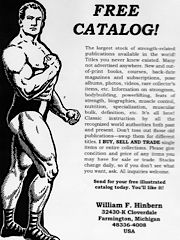 This month's collaboration with Run to Win's Blaine Moore - Great sources of training information - continues with a look at the many superb old strength-training books. Love them.
This month's collaboration with Run to Win's Blaine Moore - Great sources of training information - continues with a look at the many superb old strength-training books. Love them.
For as long as I can remember I've been surrounded by books and periodicals - shelf after shelf of hardcovers, paperbacks, magazines and newspapers. When it came time to learn a few things about the world of strength training; the starting point was clear.
Before I go any further, there is just one thing I'd like to point out : as important as it is to learn about something, it's always secondary to actually doing it. Spending time under the bar is absolutely critical.
With that in mind, back to books. These can generally be sorted into a few categories, according to both the content and their availability. These are :
Old-time strength
When it comes to the process of getting stronger, very little has changed over the past few centuries. Sure, exercises have come in to and gone out of favour (think of the barbell squat and the overhead press in Olympic Weightlifting); but the underlying mechanics are, of course, the same. After all, we're still talking about people lifting a variety of heavy objects to become bigger, stronger and faster.
Many of the books that have been written over the past century or so (any older than this, and they're a little difficult to find - although often still quite relevant) have been reprinted numerous times, are still available and still make excellent reading. A few personal favourites :
- Super-Strength
: Alan Calvert
- Key to might and muscle
: George F. Jowett
- Developing the Grip and Forearm : Thomas Inch
Where do you get them?
Online : the best sources are Amazon and suppliers such as Bill Hinbern's superb Super Strength Books site.
Offline : Although they're a little difficult to find in the offline world, larger bookstores (particularly Borders) occasionally carry them.
The golden era - 1970s
Although some people may dispute my claim that the 1970s encompassed 'the golden era', it certainly did for me. After all, it's when Arnold Schwarzenegger was making a real name for himself. Bruce Lee was fighting athletes such as Chuck Norris. Arthur Jones was creating a stir with his Nautilus machines.
And - most importantly - people the world over began to join gyms. To become big, to become strong; or simply to get into shape. Very little has changed.
One of the greatest by-products of this period can be seen at a glance of my bookshelves. Catering to the throngs of new gymgoers were a number of great books, including :
-
Encyclopedia of Modern Bodybuilding
: Arnold Schwarzenegger and Bill Dobbins
- Winning Bodybuilding
: Franco Columbu and George Fels
- Bruce Lee's Fighting Method, Vol. 2
: Bruce Lee
The magazines of this time - notably those which focussed on bodybuilding - were actually worthwhile reading in many cases (ah, the days when magazines had more content than advertising); containing specific routines, interviews with strength athletes from a variety of sports (not just bodybuilders) and simple nutritional information. The good stuff.
Where do you get them?
Online : Once again, Amazon is a great place to start. For the magazines, eBay is your friend. There are always plenty of them on there.
Offline : As you may have guessed, I love wandering around second-hand book stores. For books such as these - particularly the heavier, hardback varieties - second-hand shops are a great resource. Definitely a good place to start.
1980s - now
Although things have definitely started to settle down in the few decades since the 'golden era', there have been several great books to add to the shelves. Among these are a few which stand out for all the right reasons, including :
- Combat Conditioning
: Matt Furey
- Kelso's Shrug Book
: Paul Kelso
- Ironmind: Stronger Minds, Stronger Bodies
: Randall J. Strossen
Where do you get them?
Online : Many of these books are now available through the websites of their authors or publishers; although Amazon is still a good bet. For slightly older volumes, eBay often comes in handy.
Offline : For some reason, many of the larger bookstores shy away from recent strength-training books. Notable exceptions are stores attached to universities or colleges; and those catering largely to students.
Other recommendations
Of course, I'm not exactly alone in my love of strength-training books. To get an idea of those which other Straight to the Bar writers hold in high regard, take a wander over to Good Reads. There are several excellent volumes there.
Final thoughts
With so many great strength-training books and magazines available, it's almost assured that I've overlooked something along the way. What are your own recommendations for the 'perfect' strength-training book?
